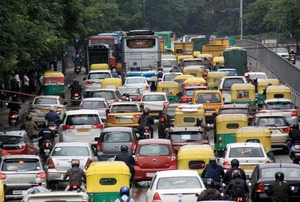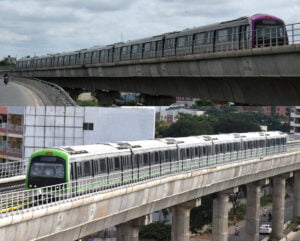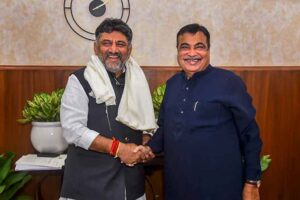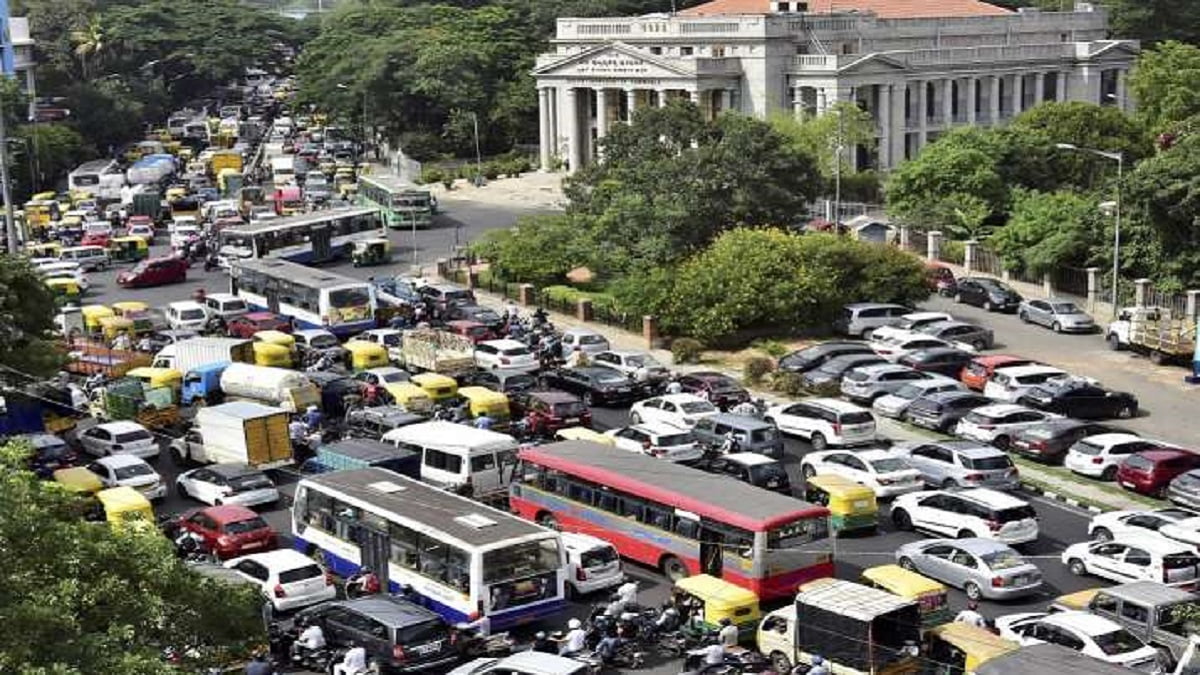According to an estimate by renowned traffic and mobility expert MN Sreehari and his team, Bengaluru loses Rs 19,725 crores per year due to traffic delays, congestion, stopping of signals, time loss, fuel loss, and other factors.
The report, which included recommendations for traffic management, road planning, and flyovers, among other things, was presented to Karnataka deputy chief minister DK Shivakumar by Sreehari, a transportation expert to numerous governments and smart cities.
Also Read: Has Congress Found A Solution For Bengaluru’s Traffic Problem?
Sreehari and his team discovered that the IT hub loses 19,725 crores for road users as a result of delays, congestion, stoppages at signals, interference of slow-moving vehicles with fast-moving, fuel loss, occupants’ time loss, loss of vehicle time when converted into money based on salary, etc. Despite having 60 fully functional flyovers in the city.

The increase in employment in the IT sector, per the research, has led to an increase in all linked amenities, including housing and education, among other things. As a result, there have been exponential population increases of 14.5 million people and about 1.5 crore vehicles in Bengaluru.
The report stated that Bengaluru’s land area increased from 88 square kilometres to 985 square kilometres in 2023. It is also further proposed to expand to 1,100 square kilometres. “On the other hand, the road length growth is not in proportion with the vehicular growth and area growth. The total length of the road is about 11,000 kilometres which is not enough to meet our transport demand and trips made,” the report said.
“The exponential growth of population and their job potential speed could not match with the infrastructural growth that is existing. The gap deficiency has resulted in delays, congestion, higher travel time, and huge economic loss (intangible) in direct and indirect cost,” said Sreehari and his team.
Roads must be planned and built to accommodate the Bengaluru’s radial, outward, and circumstantial growth, said Sreehari. He also advised using the metro rail around, coupled with linear lines and one or two circular routes, to supplement the traffic on the roads. He added in the report that the Indian Railways had also given the current CRS (Commuter Rail System) permission to help Bengaluru’s transport system.

Image Source: Wikipedia
To alleviate traffic, the team suggested the removal of roadside parking as roads are meant for traffic and footpaths are meant for pedestrian walking legally. “As a transportation expert, I have failed to show even one road in Bengaluru without parking,” Sreehari said.
Sreehari and his team outlined the infrastructure Bengaluru will require over the next 25 years to reduce traffic, and they suggested increasing mass transit like the metro, monorail, and high-capacity buses while reducing the usage of private mobility. Employing VMS (Variable Message System) with robots and artificial intelligence for road users was also recommended.
“Deploy enough personnel for observing violators and immediate action plans in addition to camera and sensor system. Since the entire road system is full of activities, exploring underground transportation, particularly for metros, government buses etc., gives openings every one or two kilometres and escape routes. This will also cover ventilation and other requirements during disaster,” the report said.

Image Source: Daily World
A flyover or an underpass should be built in five out of ten metropolitan intersections facing excessive traffic, according to a recent study by the Institute for Social and Economic Change (ISEC), as a long-term solution to the congestion problem. These flyovers or underpasses were estimated to have cost 16 crore in total to build.
On August 3, Shivakumar and Nitin Gadkari, the Union Minister for Road Transport and Highways, met in New Delhi to discuss the problem of traffic congestion in Bengaluru. To reduce the traffic in the Bengaluru, the Centre has requested that the state government create a thorough project study.



















































































